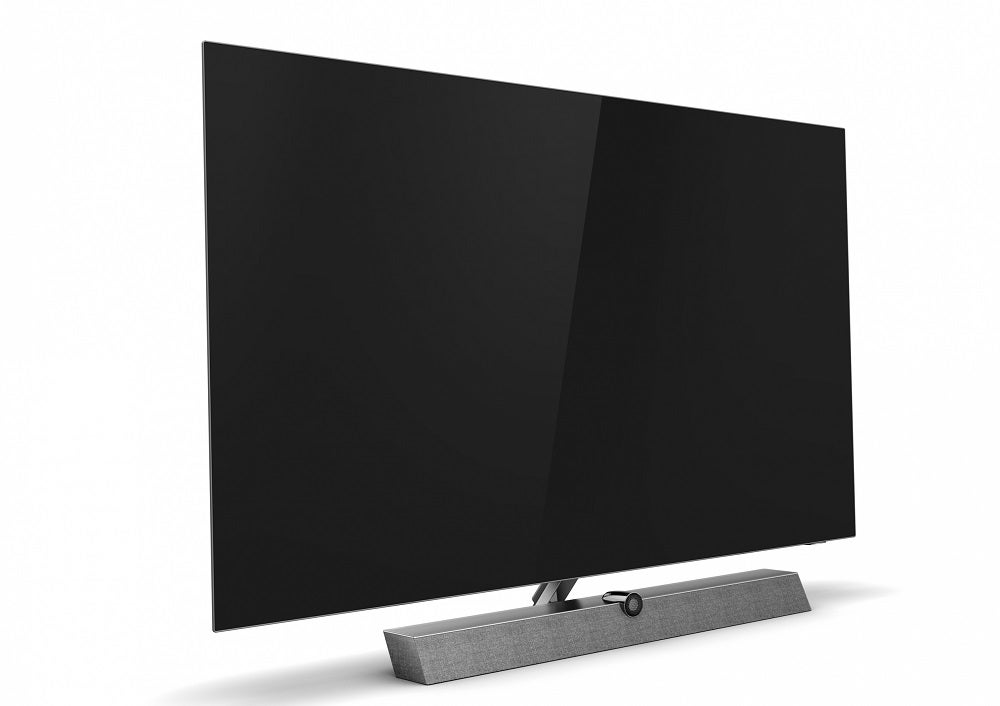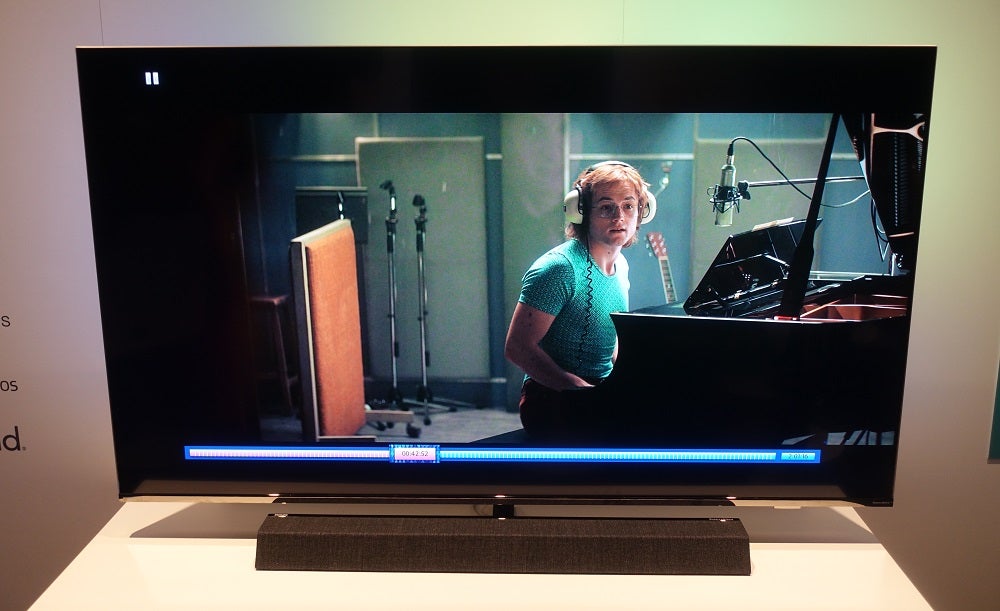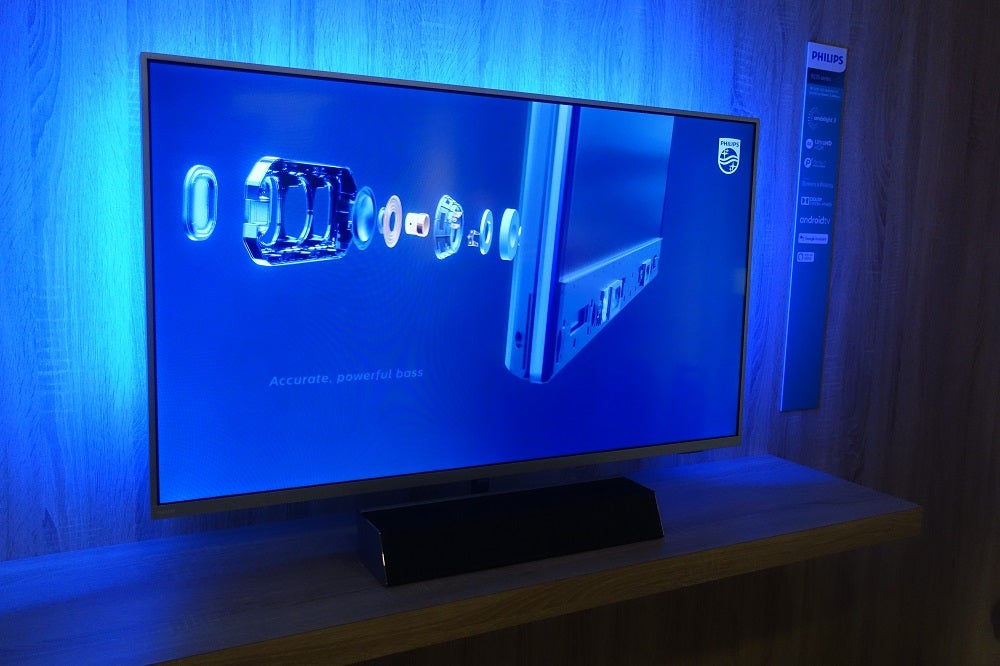Philips TV 2020: Every 4K OLED and LED Ambilight TV explained
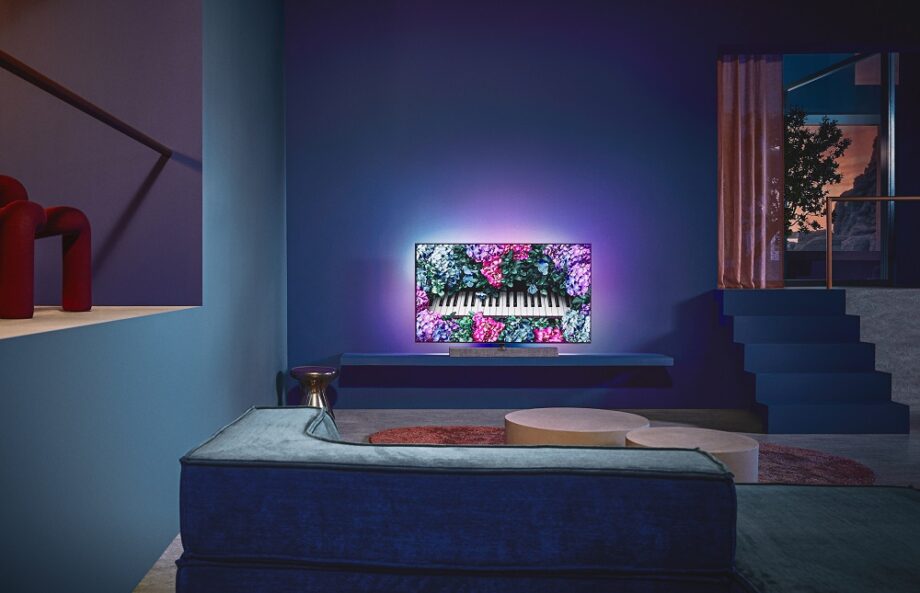
Philips TV 2020: According to Philips this year is the year of the Ambilight TV. The pandemic may caused a slight lull in sales, but if you’re after a TV with Ambilight, Philips is the only brand that sells them.
Philips TV range goes from their premium priced, elegantly-designed OLEDs to their affordable LED sets. If you’re interested in a Philips Ambilight TV, we’ve listed all the confirmed models, sizes and features that you’ll find in their TVs in 2020.
Fancy a new soundbar too? We’ve also listed all Philips’ soundbars for 2020, so you get the best that they have to offer in both sound and vision.#
Black Friday Deal: Philips 70PUS7805 4K Ambilight TV for just £699 (save £100)
Philips TV 2020 highlights
Philips envisions 2020 is going to be a huge year for Ambilight. 60% of their TV sales are Ambilight sets, and the company is hungry to build on its success.
The P5 picture engine is back once again to strut its stuff. The 4th gen P5 addresses the five pillars Philips believes are paramount to picture quality – source perfection, sharpness, colour, contrast and motion. The P5 engine can be found across the range, but only the top-range OLED TVs get the P5 with built-in AI.
Philips says that its new AI chip improves picture quality through machine learning. By analysing Philips’ picture database, they claim it can reproduce a more natural and realistic looking image.
The collaboration between Philips and Bowers & Wilkins continues, and more TVs will be receiving B&W’s audio expertise. The 9435 and 9235 LED TVs will be getting a similar speaker enclosure as the one seen on the OLED+934.
Beneath the 9435, 9235 and 9005 comes the Performance series. The Performance series aims to strike a balance between performance and price and as such they carry a number of features – Dolby Vision, HDR10+ and voice assistances – normally seen on more expensive TVs. They’ll also come in more sizes, making the Performance series more accommodating for living rooms.
DTS Play-Fi has arrived on Philips’ TV and audio products. With Play-Fi, TV and audio products can be linked together, so you can effectively join them together to produce a multi-room system. With Play-Fi, playback from music streaming services is said to be accurate to the millisecond, while there should be no AV or sync issues with passing audio between compatible products. Music streaming support includes Qobuz, Tidal, Spotify, Deezer and Amazon Music.
The OLED805 was the first model to include DTS Play-Fi, with all its 2020 and 2019 Android sets set to receive an over-the-air firmware update in the second half of 2020. Philips’ soundbars and wireless speakers will also be getting the Play-Fi update, so users will be able to get their kit connected to other DTS Play-Fi kit.
Philips TV 2020 — 4K HDR OLED
OLED935
The OLED+935 will have the 4th Gen P5 processor, but also comes with a new dedicated AI Machine Learn Sharpness function, and improved versions of the AI Smart Bit Enhancement system and Perfect Natural Reality (PNR) function.
The Intelligent Dual Engine version of the 4th Gen P5 also offers an anti-burn-in solution by using advanced logo detection to accurately detect static content to remove burn-in for 95% of static images. As usual there’s support for HDR10, HLG, HDR10+ and Dolby Vision.
The DTS Play-Fi feature makes its way to the OLED+ 935, and the set’s audio provided by Bowers & Wilkins. It’s the first Philips TV to have dedicated Atmos upfiring units and B&Ws’ Tweeter-on-Top design The OLED935 is also Philips’ first 48-inch OLED.
Read our Philips 65OLED+935 review
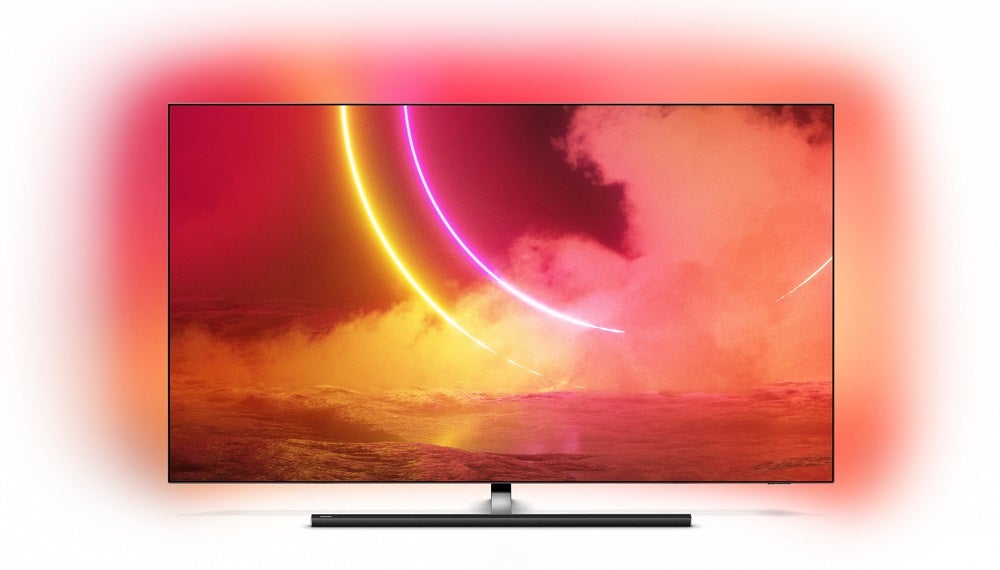
OLED 865
Currently top of the OLED range is the OLED865. It’s powered by the 4th Gen P5 with AI, with the new chip said to produce an improved picture quality over last year’s effort, as well as deliver better upscaling and HDR.
The Perfect Natural Reality (PNR) is also able to upscale SDR content to HDR and like the rest of Philips’ OLED range, the OLED865 meets the requirements for Ultra HD Premium.
The TV supports HDR10, broadcast HLG, HDR10+ and Dolby Vision. The TV can also pass-through Dolby Atmos, and features a down-firing 2.1 speaker system with 50W of power. Android and Google Assistant are supported.
Both the 55-and 65-inch stands support swivel motion.
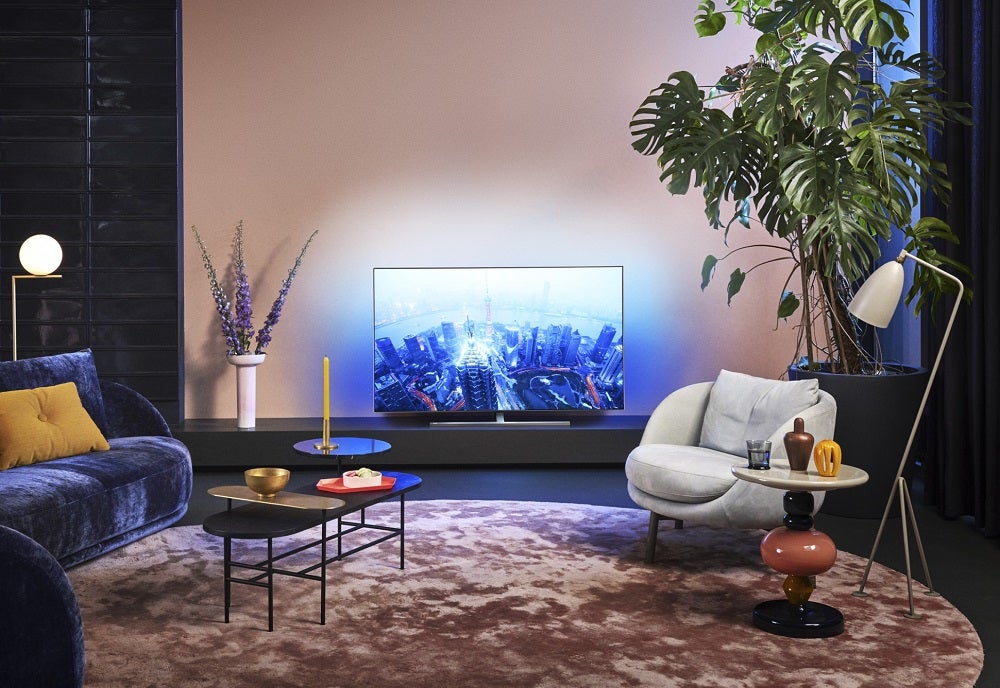
OLED 855/805
- 55OLED855
- 65OLED855
Like the OLED865, the OLED855 and OLED805 also feature the 4th Gen P5 chip with AI.
Again, all the main HDR formats are supported, and the 4th Gen P5 AI processor is also able to adjust HDR10 & HDR10+ sources for a better image. It can also tweak Dolby Vision content (but only in Bright mode).
You get Dolby Atmos and the Dolby Virtualizer compatibility, as well as Dolby bass and dialogue enhancement. The smart interface Android 9 and Google Assistant, and both sets ‘Work with Alexa’.
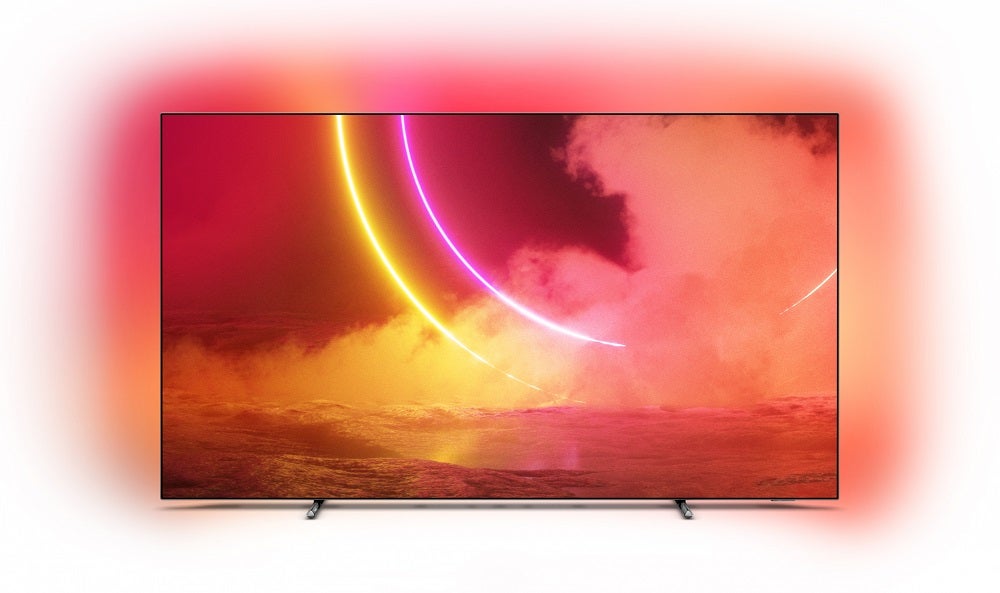
The OLED855 has exactly the same features and picture quality as the OLED855. The major difference is the design. The OLED855 opts for a central pedestal; the OLED805 features feet, or as Philips describes them “dark chrome sticks”.
- read our Philips OLED805 review
Philips TV 2020 — 4K HDR LED
9435 LED UHD
- 55PUS9435/12 – £999.97
- 65PUS9345/12
Philips’ collaboration with B&W continues with the 9435 LED screen, with Bowers producing a speaker enclosure.
The speaker is in a 2.1.2 configuration and supports Dolby Atmos. Brightness is around 500 nits, and the TV packs in support for HDR10, HLG, HDR10+ and Dolby Vision.
- read our Philips 55PPUS9435 hands-on review
9235 LED UHD
The 9235 is the smaller version of the 9435 at 43-inches. It features a 40W B&W designed speaker enclosure, P5 processor and support for the main HDR formats. There’s no option to wall-mount the TV.
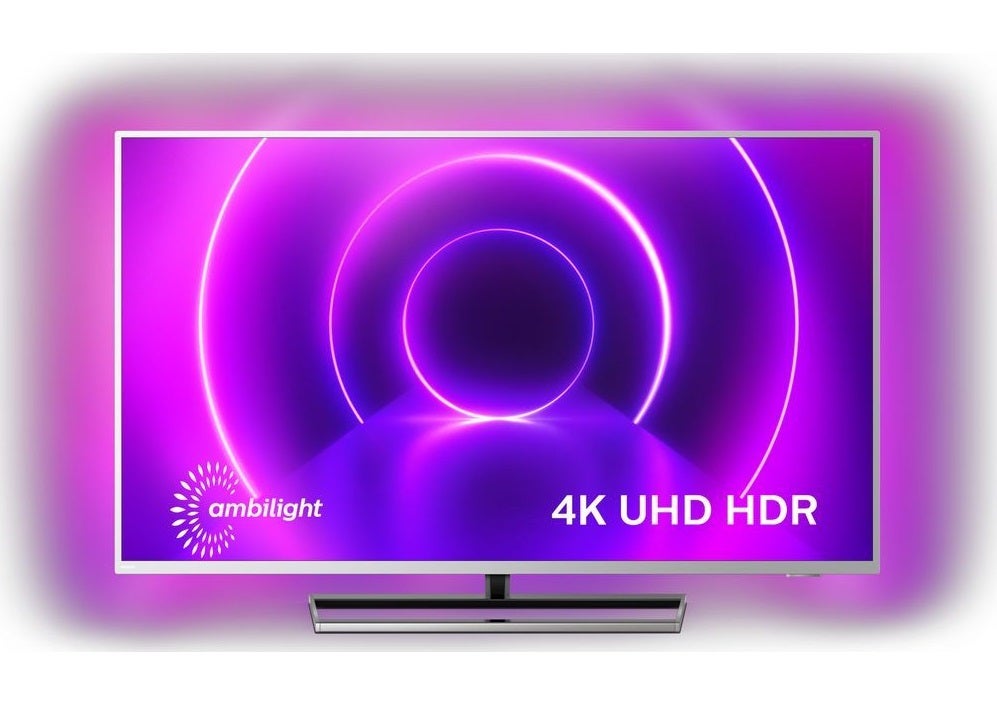
9005 LED UHD
The 9005 is available in three sizes ranging from 50- to 70-inches. The speaker is a 20W down-firing effort and continues Philips’ belief in supporting all the HDR formats. It can play music through DTS Play-Fi as well as passthrough Atmos soundtracks, comes with the main video streaming apps (such as Disney Plus) and Google Assistant voice control.
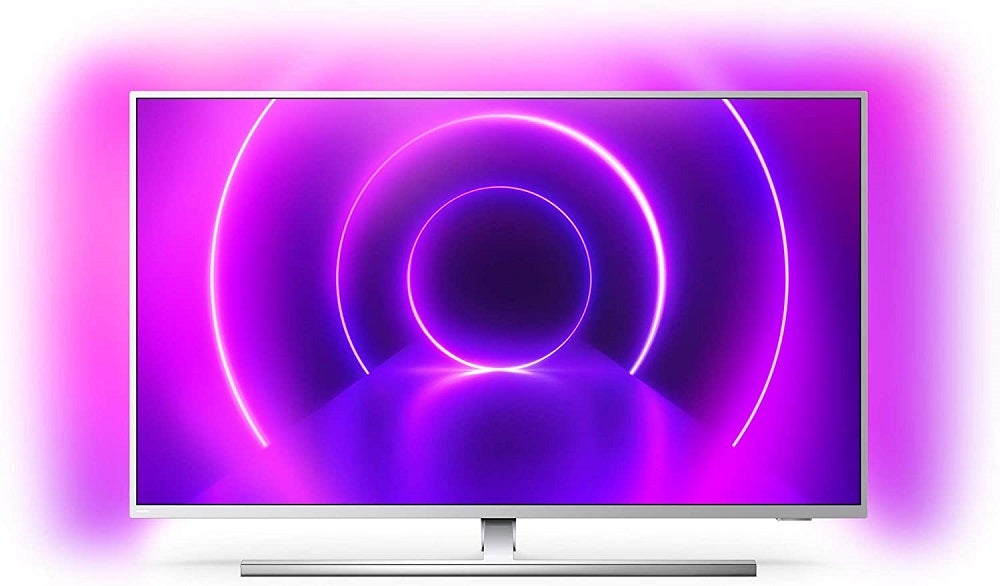
Performance Series 8505
The 8505 marries price and performance with the convenience of more sizes to choose from. It has similar specs to the more expensive LEDs listed so it has support for the major streaming apps, Android TV OS, Google Assistant, full HDR support and the P5 picture processor.
Sizes 43- to 58-inches feature a swivel stand, while the bigger sizes have a non-swivel stand.
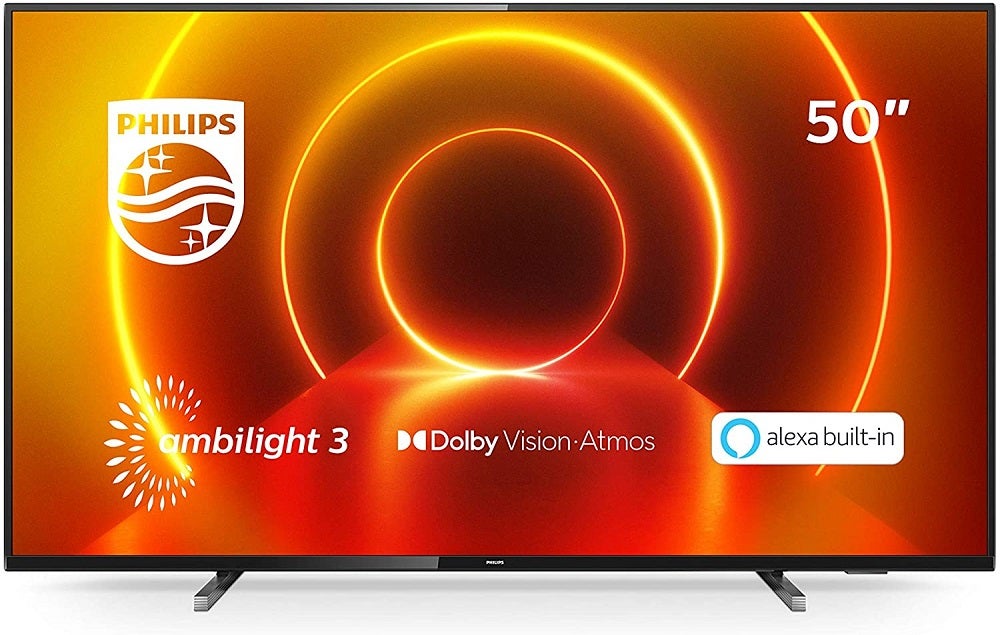
7805 LED UHD (7800 Series)
- 43PUS7804/12
- 50PUS7804/12
- 55PUS7804/12
- 58PUS7804/12
- 65PUS7804/12
- 70PUS7835/12
- 75PUS7835/12
Philips hasn’t announced any TVs lower than the 7805, so we assume this is the entry-level set for 2020. The 7805 range is also known as 7804 and 7835,
Features fall off at this point but it is available in more sizes, with the 7804 covering 43- to 65-inches and the 7835 70- to 75-inches. The number of HDMI ports stands at 3, the smart interface is the Saphi OS. It does not support Disney+, but does feature the likes of YouTube, Netflix, Rakuten TV and Prime Video. There’s no built-in voice assistance either.
Philips TV 2020 — soundbars
To complement its 2020 TV range, Philips has launched a new range of soundbars and subwoofer combos. At the top of the list are the Fidelio B95 and B97 soundbars, followed by the more affordable PB range of speakers.
Related: What is IMAX Enhanced?
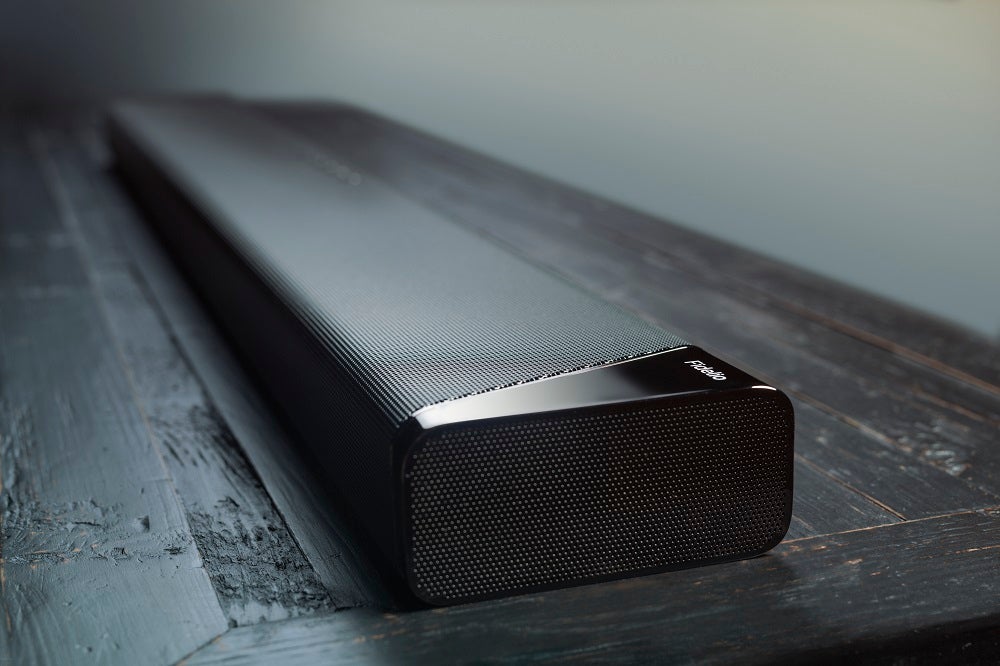
Starting with the premium soundbars first, the Fidelio B97 is a 7.1.2 multi-channel soundbar with dedicated Atmos upfiring speakers and Philips’ Surround-on-demand technology. It comes with two detachable wireless speakers that function as the left and right channels when connected to the main bar, or as left and right surround channels when detached and placed within the room. As well as support for Atmos, it supports DTS:X, IMAX Enhanced and HDMI 2.1 features with twin eARC ports.
Related: What is DTS:X
The step down B95 offers Atmos in a 5.1.2 configuration but leaves out the Surround-on-Demand tech. According to Philips the wireless subwoofer can deliver bass frequencies down to 35Hz with, power rated at 450W for the main bar and 240W for the sub. Both the B97 and B95 support DTS Play-Fi connectivity. No word yet on prices for either product.
If you can’t spare the (likely) expense for the premium Atmos efforts, then there are more affordable solutions to go with your Philips Ambilight TV. The following all come with a wireless subwoofer, wall-mounting support and use Philips’ EasyLink HDMI-CEC protocol that shares functionality between the TV and soundbar. They’ll be a getting DTS Play-Fi, which will open them to being connected in a multi-room system.
At the top is the 3.1 channel PB603 Dolby Atmos soundbar with a total power output of 320W (200W bar + 120W sub). Connections include HDMI ARC, 3.5mm jack, optical, USB and Bluetooth.
Underneath is the 2.1 channel PB405 smart soundbar. It works with Google Assistant and AirPlay 2 for sending content from supported devices. Total power output is 120W (60W + 60W) and connections mostly mirror the PB603 with a microphone-in supported but USB dropped.
Next is the PB6305 2.1 channel Dolby digital soundbar. Power is rated at 140W (80W + 60W). No smart features here and there’s no EasyLink or microphone-in.
Last is the PB6405 2.1 channel Dolby digital soundbar. Power is again 140W (80W + 60W), there are no smart features and connections mirror the PB6305. The difference is that it comes in a white/grey colour variant.


